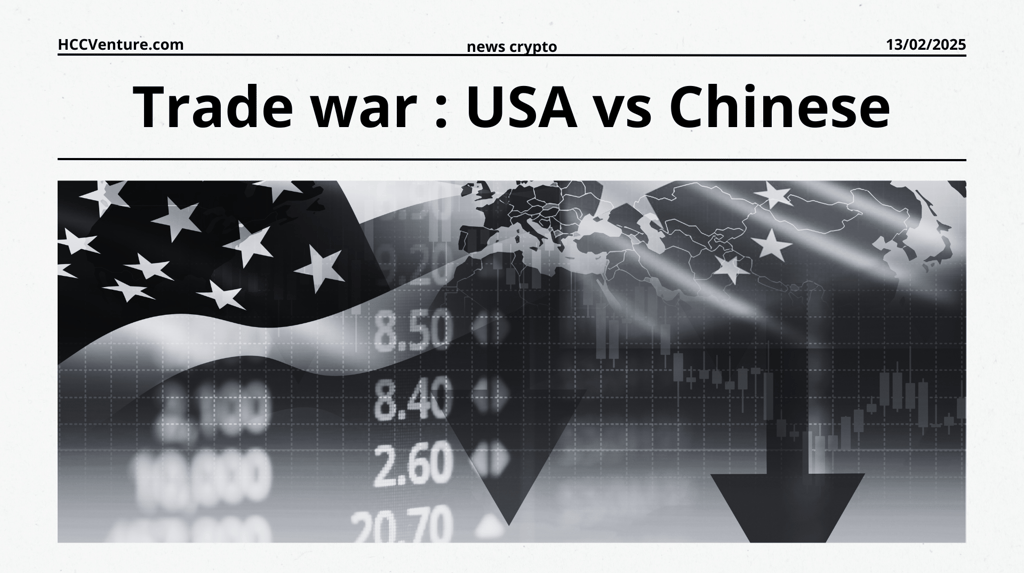Analysis of the US-China trade war
The trade war between the US and China began on July 6, 2018, when the US imposed 25% tariffs on $34 billion worth of Chinese imports, citing unfair trade practices. China immediately responded with similar tariffs on $34 billion worth of US goods.
2/14/20253 min read


1. History of the US-China Trade War
The trade war between the US and China began on July 6, 2018, when the US imposed 25% tariffs on $34 billion worth of Chinese imports, citing unfair trade practices. China immediately responded with similar tariffs on $34 billion worth of US goods. The conflict lasted for more than two years, through multiple rounds of tariffs and negotiations, before reaching a Phase One Agreement in January 2020.
July 6, 2018 – The US imposes 25% tariffs on $34 billion worth of Chinese imports. China retaliates with similar tariffs on $34 billion worth of US goods.
August 23, 2018 – Second round of tariffs: US imposes 25% tariffs on $16 billion worth of Chinese goods; China retaliates with $16 billion in tariffs.
September 24, 2018 – US expands tariffs to $200 billion of Chinese goods; China retaliates with $60 billion in tariffs.
December 1, 2018 – A 90-day ceasefire is agreed at the G20 summit in Argentina to pave the way for negotiations.
5/5/2019 – The US increased tariffs to 25% on $200 billion worth of Chinese goods.
August 1, 2019 – Trump announces 10% tariff on $300 billion worth of Chinese imports.
8/23/2019 – China retaliates with $75 billion in tariffs; US continues to raise tariffs.
October 11, 2019 – Phase One Deal announced, halting some tariff hikes.
December 13, 2019 – The US and China reach a Phase One deal, resulting in tariff reductions.
January 15, 2020 – Phase One agreement is officially signed, focusing on trade, intellectual property, technology transfer, and monetary policy.
August 25, 2020 – Both countries confirm their commitment to implementing the Phase One Agreement.
2. Impact on Stocks, Gold, Oil and Cryptocurrencies
Stocks: The S&P 500 has been volatile during the trade war. From 2,913 points in July 2018, the index fell to 2,506 points in October 2018 (down 14%), then recovered and reached a high of 3,230 points in October 2019. This volatility reflects investors' concerns about escalating trade tensions.
Gold: Gold prices typically rise amid economic and political uncertainty. In 2018, when the trade war began to escalate, gold prices rose nearly 10%. By February 2025, gold prices had reached a record high of over $2,850 an ounce, due to concerns about the US-China trade war and unrest in Gaza.
Oil: Oil prices are also affected by trade tensions. Tariffs and retaliation between the world’s two largest economies could reduce global oil demand, leading to price volatility. However, other factors such as supply and geopolitical developments also play a role in determining oil prices.
Bitcoin started the trade war (July 2018) at $6,600.
As tensions escalated, Bitcoin fell to $3,400 in December 2018, then stabilized around that level in February 2019.
In June 2019, Bitcoin recovered strongly to $12,000, although the trade war continued to escalate and did not end until August 2020.
Note that from December 2018 to June 2019, not only was there a trade war, but it was also the peak of the crypto market cycle's "crypto winter." The data was also impacted by COVID-19, which sent Bitcoin crashing to $5,000 in March 2020 before quickly recovering and hitting an ATH later that year, despite tariffs and the ongoing pandemic.
3. Predictions for the upcoming Trade War in April 2025
Based on recent developments, it is likely that trade tensions between the US and China will continue to escalate in April 2025. New tariffs and retaliatory measures may be implemented, especially as both countries seek to protect their economic and political interests.
4. Predicting the impact on the world financial economy
If the trade war continues to escalate, the global economy could face the following challenges:
Slowdown in economic growth: Trade tensions could disrupt global supply chains, reduce output and increase production costs, leading to a slowdown in economic growth in many countries.
Financial Market Volatility: Stock markets may continue to be volatile, with a downward bias due to concerns about corporate earnings and the economic outlook.
Commodity prices rise: Gold prices may continue to rise due to safe-haven demand from investors. Oil prices may be volatile due to concerns about falling demand and geopolitical factors.
Cryptocurrency Market: Cryptocurrencies may continue to be seen as a safe haven asset, leading to an increase in value. However, the high volatility of this market also poses many risks for investors.
In short, the US-China trade war has had and is having far-reaching impacts on the global economy and financial markets. Closely monitoring developments and preparing for different scenarios is necessary to minimize risks and take advantage of opportunities in this volatile context.
Explore HCCVenture group
HCCVenture © 2023. All rights reserved.


Connect with us
Popular content
Contact to us
E-mail : holdcoincventure_contact@hccventure.com
Register : https://linktr.ee/holdcoincventure
Disclaimer: The information on this website is for informational purposes only and should not be considered investment advice. We are not responsible for any risks or losses arising from investment decisions based on the content here.


TERMS AND CONDITIONS • CUSTOMER PROTECTION POLICY
ANALYTICAL AND NEWS CONTENT IS COMPILED AND PROVIDED BY EXPERTS IN THE FIELD OF DIGITAL FINANCE AND BLOCKCHAIN BELONGING TO HCCVENTURE ORGANIZATION, INCLUDING OWNERSHIP OF THE CONTENT.
RESPONSIBLE FOR MANAGING ALL CONTENT AND ANALYSIS: HCCVENTURE FOUNDER - TRUONG MINH HUY
Read warnings about scams and phishing emails — REPORT A PROBLEM WITH OUR SITE.
